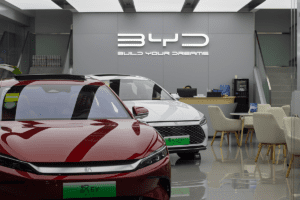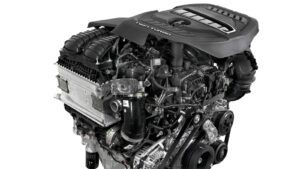System Failure Halts Toyota's Japanese Production

Good morning! It’s Tuesday, August 29, 2023, and this is The Morning Shift, your daily roundup of the top automotive headlines from around the world, in one place. Here are the important stories you need to know.
2023 Toyota Crown: Design Details
1st Gear: Production Stop At Japanese Toyota Facilities
Toyota will reportedly restart operations at its assembly plants across Japan on Wednesday after a production system malfunction stifled domestic output for the automaking giant. Twenty-five production lines at a dozen plants will be up and running on Wednesday morning, and two more will join them in the afternoon.
Toyota is said to be investigating the cause of the glitch, which it says is not due to a cyberattack. It also prevented the company from ordering components to the plants that account for about a third of the automaker’s global production. From Reuters:
Its Japan output averaged about 13,500 vehicles daily in the first half of the year, Reuters calculations showed. That excludes vehicles from group automakers Daihatsu and Hino.
Operations were halted for a day last year when a supplier suffered a cyberattack, hampering Toyota’s ability to order parts. Toyota resumed operations using a back-up network.
Analysts said Toyota could be tested in making up for output lost during the outage, such as by running extra shifts.
“Output was running at full capacity so there’s little additional room for production,” said Seiji Sugiura, an analyst at Tokai Tokyo Research Institute.
Tuesday’s incident also had a knock-on effect. Group firm Toyota Industries said it has partially suspended operations at two engine plants due to the automaker’s glitch.
Reuters says that Toyota is pioneering “just-in-time inventory management.” It’s meant to keep costs down, but it does mean that supply chain snarls could put production at a higher risk.
2nd Gear: Google AI Is Coming To GM’s OnStar
General Motors is said to be using artificial intelligence from Google to improve OnStar’s voice recognition and help answer customer questions.
The automaker said its collaboration with Google, which started back in 2019, has “woven Google Cloud’s Dialogflow technology into OnStar’s Interactive Virtual Assistant” that debuted last year. It can give OnStar users turn-by-turn navigation directions, and it has reportedly improved OnStar’s ability to pick up on a customer’s spoken request. From Automotive News:
The virtual assistant’s help with route assistance and other nonemergency requests through the in-vehicle OnStar button frees up advisers to handle issues that need human intervention.
The Google technology also is present in chatbots that GM has placed on its corporate and vehicle brand websites, enabling conversational responses to consumers’ questions, the automaker said. GM and Google are piloting other uses for AI technology.
[…]
GM said the Google-powered virtual assistant is now offered in most of its vehicles from the 2015 model year to present that have OnStar connected, and that it responds to more than 1 million customer requests each month in the U.S. and Canada.
General Motors is adding services like Google Assistant, Maps and Play into more and more of its vehicles, and they can be accessed through screens in the cars.
3rd Gear: Ni(oh No)
Chinese EV maker Nio reported a larger-than-expected loss in the second quarter as vehicle deliveries came in at the low end of the company’s target. The automaker posted a net loss of 6.06 billion yuan ($831 million) in the quarter ending on June 30th. That is a good deal wider than the average analyst estimate of 4.73 billion yuan. It also more than doubled the 2.76 billion yuan it lost in the same period last year. From Bloomberg:
Revenue dropped 14.8% to 8.77 billion yuan, as quarterly deliveries fell 6% to 23,520 vehicles, at the bottom of the company’s forecast. Gross margin continued to drop, down to 1% from 13% a year earlier and 1.5% in the previous quarter.
While senior executives earlier this year claimed to be “very confident” of doubling sales to 250,000 vehicles in 2023, Nio only managed to ship 54,561 cars in the first half — just over 20% of its annual goal. It also missed its annual target last year, and has been forced to delay investments in fixed assets, postpone research and development plans, and be more cautious on its overseas expansion.
Nio’s sluggish sales and unsatisfactory earnings have raised concerns over the future of the company, which three years ago was on the brink of collapse before a local government rescue. Now analysts are wondering how long a $738.5 million investment from Abu Dhabi’s CYVN Holdings LLC might last.
More recent figures point to some improvement. Nio delivered a record 20,462 units last month after the company cut prices, joining the price war engulfing the Chinese market, and rolled out two new versions of its cars in the space of a month. More than 10,000 of the cars shipped in July were the revamped ES6 unveiled in late-May.
Nio reportedly plans to deliver 55,000 to 57,000 vehicles in the third quarter of this year. That is said to generate revenue between 18.90 billion and 19.52 billion yuan.
4th Gear: BYD Has A Grand Ol’ Time
Shares of Chinese automaker BYD jumped over five percent Tuesday morning. It’s just a day after posting a big rise in first half profit and record deliveries. Net profit reportedly rose 204.68 percent in the first half of 2023. That comes out to a net earnings of 10.95 billion yuan (1.50 billion) from January to June. That’s up big from 3.59 billion yuan a year earlier. From CNBC:
The strong numbers were mainly attributable to rapid growth in the new energy vehicle business, the firm said in a stock filing.
Revenue in the first six months increased 72.72%, compared to the first half of 2022, according to the stock filing.
“If you look at BYD numbers, clearly the top line growth has been very strong, but we are even more impressed by its margins. BYD’s gross margin in the first half was 18%. That’s Tesla’s gross margin,” according to Jiong Shao, Barclays’ China technology analyst, told CNBC.
China’s top-selling car brand posted its best-ever quarterly sales results. Sales of passenger new energy vehicles in the second quarter were 700,244 units, up about 98% year-on-year, according to the company.
In comparison, U.S. rival Tesla reported deliveries of 466,140 vehicles globally for the second quarter.
China is the largest auto market in the world by sales and production. It is also the largest EV market in the world, and a key driver in the push toward electric cars.
[…]
BYD is under pressure from a price competition among domestic rivals as well as Tesla.
Elon Musk’s EV-maker slashed the prices of its Model S and Model X in August as the company looked to gain market share amid rising competition in China. The additional cuts came the same month that Tesla dropped prices for its Model Y and Model 3.
Earlier this year, BYD and its domestic rivals such as Nio and Xpeng also cut prices.
CNBC says these price cuts come as customers continue to be cautions on spending after a weaker than expected economic recovery in China following strict Covid restrictions being lifted.
Reverse: The Republican Party Sets Itself On Fire
Neutral: Chewsday
Oi bruv it’s chewsday innit?
On The Radio: Teddi Gold – “Technicolor”
Teddi Gold – Technicolor (Official Video)



